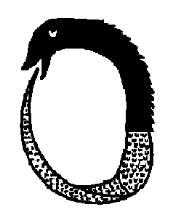Introduction "East is East, and West is West, and never the twain shall meet." We might think what Kipling wrote just above is "old hat" and doesn't apply any more. We now live in a global village and East & West have more than just met. But Kipling was not speaking in a superficial way. He might equally have said, "Women are women, and men are men, and never the twain shall meet." Just because there may be much interaction between the two doesn't mean the gap has necessarily been fully bridged. And judging from the gaping misunderstandings that occur, it might be that on some level this gap is never really bridged at all! To help us gain a clearer understanding of the gap, consider that in the West science has become the ultimate authority on what is real and what we can rely on. It is interesting to note that science itself is based on what the senses reveal to us. In contrast to this, in the East a world based on what the senses tell us is referred to as "Maya", a world of illusion. In the quantum world this kind of gap has a prominent place. Nuclear physics has had to come to terms with phenomena that just don't add up. A nuclear particle is in two places at once, and is at times not a particle at all, but a wave instead. Quantum Mechanics was created to come to terms with and explain this conundrum and others. Quantum physicists have come out with some very mysterious statements such as something (Schrödinger's cat) being both dead and alive at once, and of the universe being created by consciousness. Quantum Mechanics is a work of genius and has been effective at making predictions about some of the happenings within the atomic landscape. But on a cognitive level it keeps making contradictory statements and has not succeeded in bridging Kipling's unbridgeable gap. Physicists have not been able to bridge the gap between the nuclear and Einsteinian worlds on the one hand and the Newtonian world of classical physics on the other. They dream about finally discovering what they call a "unified field theory" that will encompass everything, but so far Kipling still rules the day. Quantum Polarity approaches the unbridgeable gap from another direction. It aims to understand how we understand, and do this by way of understanding cognition, the tool or means we have for awareness and understanding. This gets us into the realm of reflexivity, a world similar to the world of Quantum Mechanics, full of contradictions, traps and hidden dangers, as well as elusive insights into the many secrets of the universe that we so desperately seek after. Quantum Polarity as the name implies, deals with polarity, the foundation of our cognitive system. Polarity seems such a simple and basic thing that it appears nothing more can be said about it or done with it. But as it is so close to us, and is such an integral part of our way of understanding, we have not been able to detach ourselves from it and see it more objectively so as to work with it and come to understand it more fully. As we shall see, artists are no stranger to these things, but to get the artist and the scientist to communicate is again like trying to bridge the unbridgeable, the gap this time being the head and the heart. Quantum Polarity approaches this dilemma using the principle of self-reference. This is done by applying polarity itself to each side which helps it, as it were, to become self-aware. This provides the foundation for bridging the two sides. But it will be more than a bridge. Just as an airplane is supported in its flight above physical ground without a static foundation, Quantum Polarity provides us with a similar kind of support. This support is based on the interaction based on the dynamics between different parts of the newly created polarity. Change becomes the foundation, a fluid foundation, of what supports us within the gap between the two sides of a polarity. But this change is not random change. It is characterized by a harmonious interaction between the two sides of a polarity that is in accord with the dynamics of Quantum Polarity and can best be described as interdependence, the essence of life, growth, health, wholeness in action. We will discover that our desire to bridge the gap was misdirected, for we will be able to move freely within the gap. Instead of wanting to bridge the gap or even eliminating it to create an artificial synthesis or unity, we will come to celebrate the gap as the region of life. No longer will we support a static system and remain at one end or the other. Without an interaction with the other side, the one side will eventually develop as a cancer until the system is completely immobilized by death or dysfunction. It turns out that love – the heartful interchange between people (as individuals or groups), where one gives to others the gifts of one's being, while also receiving the offerings of others – is what truly bridges Kipling's unbridgable gap. While not the foundation of life and love, Quantum Polarity mirrors the dynamics of how it works, providing a blueprint for what has the potential to offer us health and well-being, and joy.
www.quantumpolarity.com March 3, 2013
|


